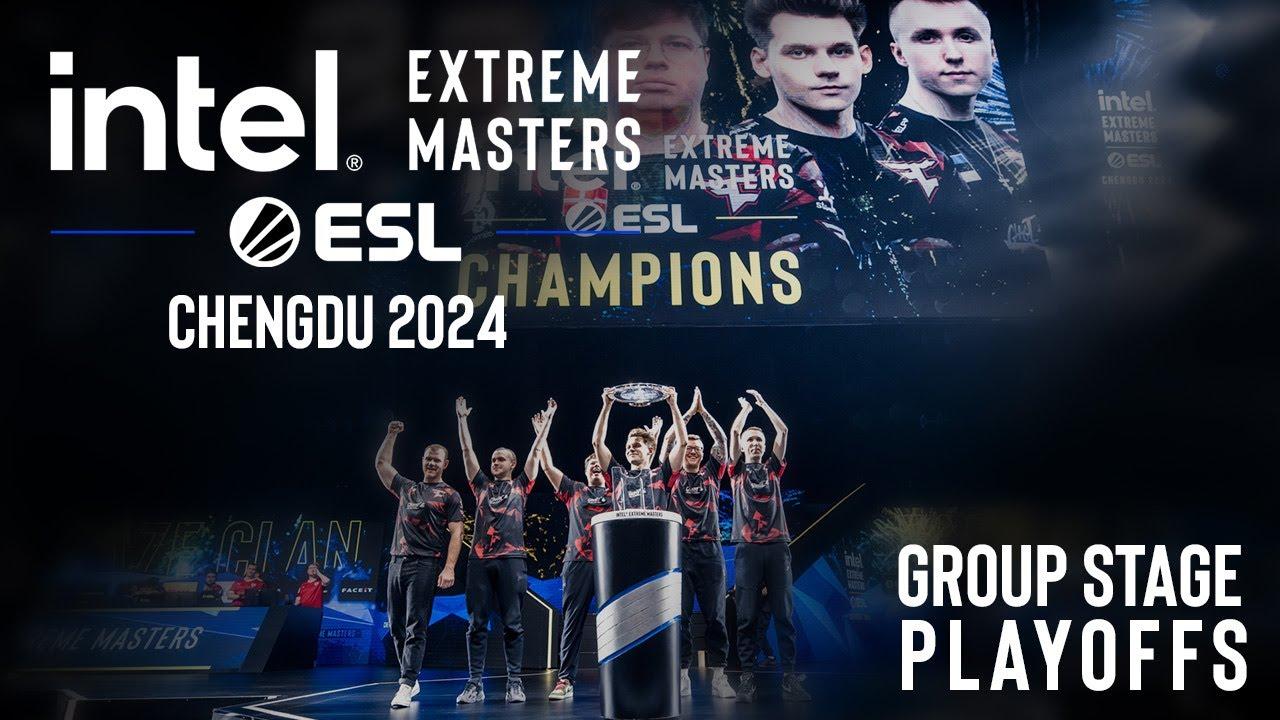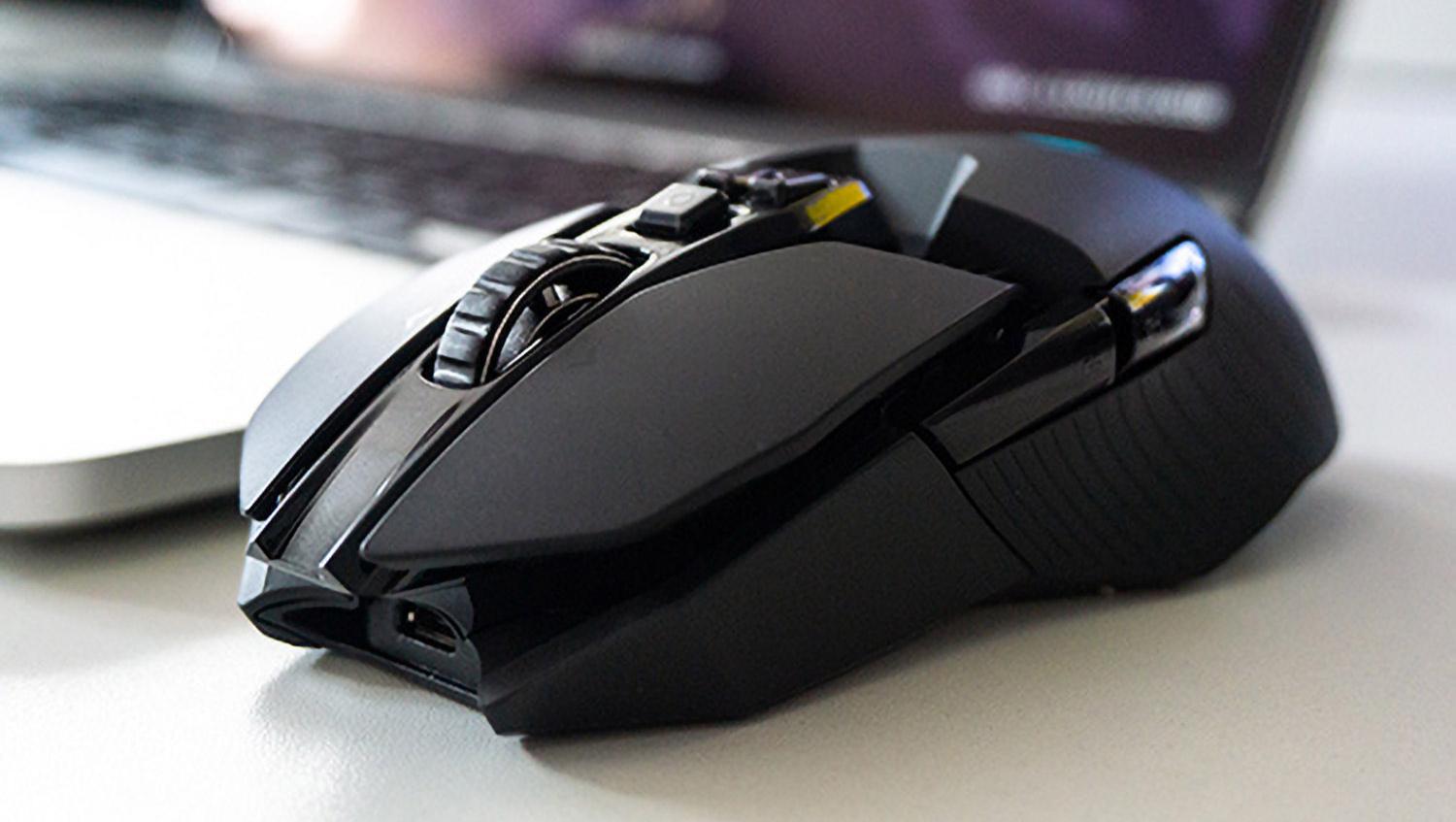
Explaining why a higher DPI is better for first-person shooters
It turns out that top of the line mice have DPI options that go all the way into the thousands for a reason. For years, gamers have copied their siblings, friends, and pro players as a starting point for customizing their own mouse settings, but it turns out that many gamers may have have been playing with one hand almost tied behind their back.
A vast majority of players are still using very low settings, especially when it comes to their mice and the peripheral’s dots-per-inch setting, more commonly known as DPI. It’s not their fault. Many players, inspired professional esports athletes, hopped into games like Counter-Strike: Global Offensive using pro configuration files and mouse settings, which most pros probably copied from different pros players that inspired them. What remains is a generation of gamers and pro players that are still using settings from the early 2000s.
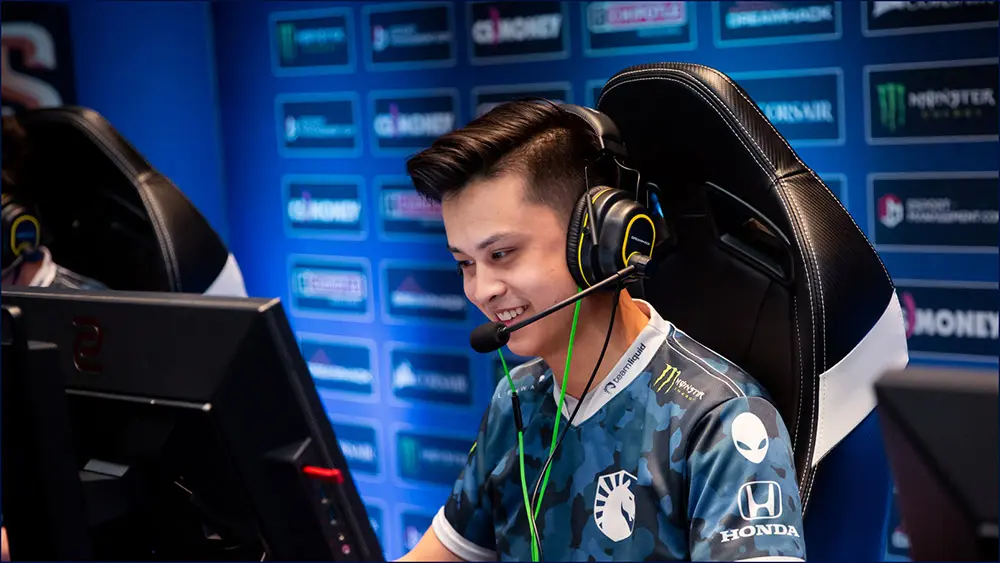
Take Team Liquid’s Jake “Stewie2k” Yip, for example. The 22-year-old competes in CSGO using a 1.8 sensitivity with his mouse set at 400 DPI. Former CSGO pro and Valorant’s first player to hit the coveted “Valorant” rank in Riot’s new FPS, Tyson “TenZ” Ngo, plays at 800 DPI and a sensitivity of 1 in-game. The pattern continues across teams, games, and everyday players who think they’re using the best settings. They’re not.
It’s been proven that lower sensitivities are easier to control, and we’re not advocating for players to raise them. Your DPI, however, may need changing.
What is DPI?
The easiest way to think of DPI is like it’s the resolution that the mouse uses to “feel” itself move. Most gaming mice today have optical or laser sensors that watch the mousepad beneath them, counting up the number of dots. It’s easier to think of the dots as pixels that the mouse translates movement into. If a player moves his mouse one inch at 400 DPI, as long as mouse acceleration is disabled and their Window’s settings are default, the crosshair will move exactly 400 pixels. It’s accurate enough, but users who are chasing every possible advantage are going to want to switch to a higher DPI. Here’s why.
Does a higher DPI really make a difference?
Simply put, a higher DPI makes a huge difference. Most gaming mice check how far they’ve moved around 1,000 times a second, also called a polling rate. If a player is using a DPI lower than than the number of times the mouse checks for movement, they’re leaving performance and accuracy on the table. A higher DPI makes sure that every time the mouse can update itself on the screen. it will. Here’s an easy way to think about how DPI affects the accuracy of a mouse in familiar terms. We’ve used common DPI numbers for the example.
Two gamers are playing a first-person shooter. One player checks his radar 1000 times a second. The other player checks his 400 times a second. By checking his radar much less often than the first player, the second player has missed out on 600 updates to the radar. If an enemy appears and quickly retreats, odds are the player who checks their radar more often caught the enemy pass by. It’s the same with DPI.
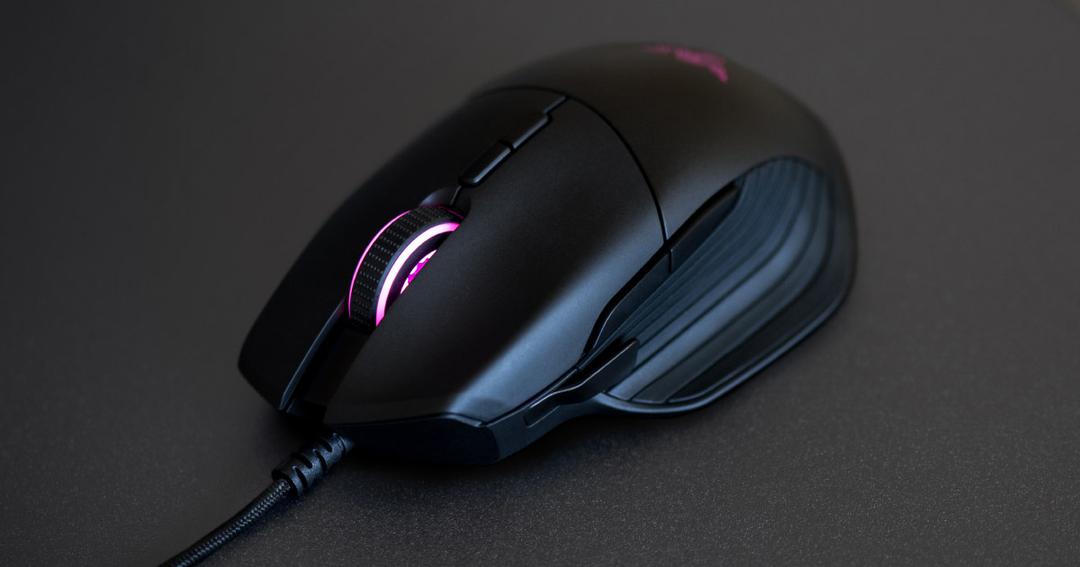
In the end, it comes down to how accurate a user wants the mouse to register their inputs. DPI directly correlated into how precise of a movement a mouse can make. If a scientist has two microscopes, one that magnifies 400x and one that zooms in 1,000x, the choice would be clear, especially if the scientist wants to see something clearly and upclose.
By using a DPI lower than its refresh rate, a mouse will only adjust its position on the screen 400 times every inch at 400 DPI. If a player adjusts their sensitivity to make up for the higher DPI value, a mouse could sense changes at DPIs as high as the mouse’s polling rate, making it more accurate because it now has more information to read as it takes more snapshots of its movements. Luckily, there are ways to convert a sensitivity so that the actual distance a mouse travels is the same at higher DPI values as it is at lower DPIs, making the adjustment period much smaller than it might be otherwise.
Transitioning to a higher, more accurate DPI while keeping the same sensitivity
This process is amazingly simple, especially thanks to the numerous free sensitivity converters available on the web. While most are used to take a sensitivity value from one game and transform it into the same effective sensitivity in another, they work just as well to transform a 1.6 sensitivity at 400 DPI to a comparable sensitivity at 1200 DPI. The most accurate way to do this is to literally measure the distance a player turns in-game by measuring how far they have to move their mouse to do a 360.
For example, in order to turn all the way around in Counter-Strike: Global Offensive with a sensitivity of 1.6 and a DPI of 400, it takes 25.57 inches of mouse movement. Players could calculate this by hand, by measuring exactly how far their mouse moves to turn all the way around, change their DPI to its new value, and then adjust their sensitivity in game until the two distances are the same.
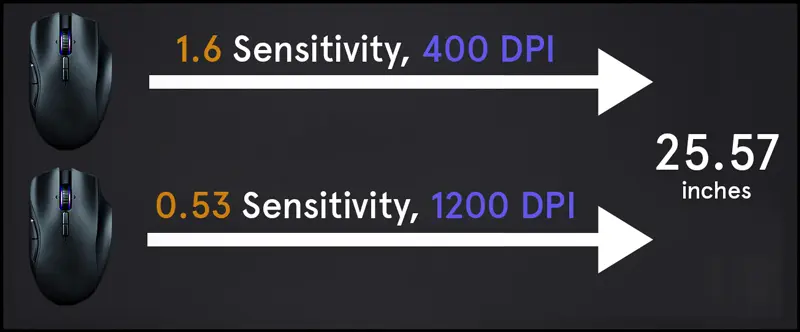
Calculators like this one take some of the heavy lifting out the work, allowing players to simply plug in their current settings and their new DPI, giving them their new sensitivity in seconds. While the linked converter is labeled Valorant, players can change the games from one to another or between the same game and enter different DPI settings in the form.
Players should still practice with their new settings. It’s going to feel weird at first. Many who have changed from lower DPI’s to higher ones aren’t used to the fine motions that the mouse will now pick up. Once they get used to it, however, many compare the increased DPI to the feeling of 144 hertz compared to 60. They just won’t go back.
It sounds crazy, but after a few minutes of deathmatching or target training, flicks start to hit more often and subtle adjustments make a much larger impact thanks to a higher DPI’s affect on how the mouse turns a players instructions into frags.
Sometimes, however that isn’t possible.
Recommended

All maps are now available in CS2, what does it mean?
Poor Inferno players.
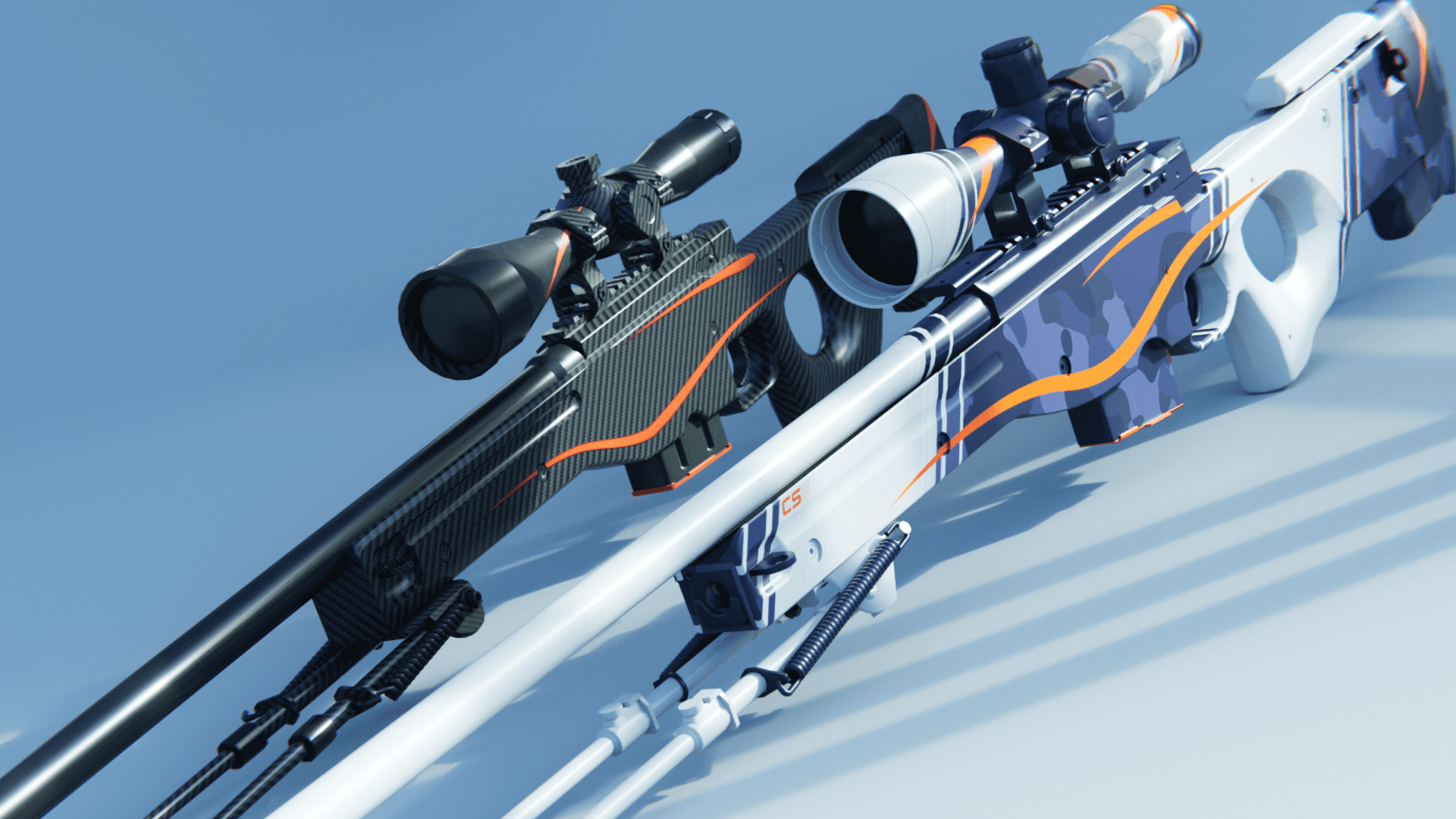
Redline creator reveals a sequel skin for CS2
Maybe call it the Orangeline?
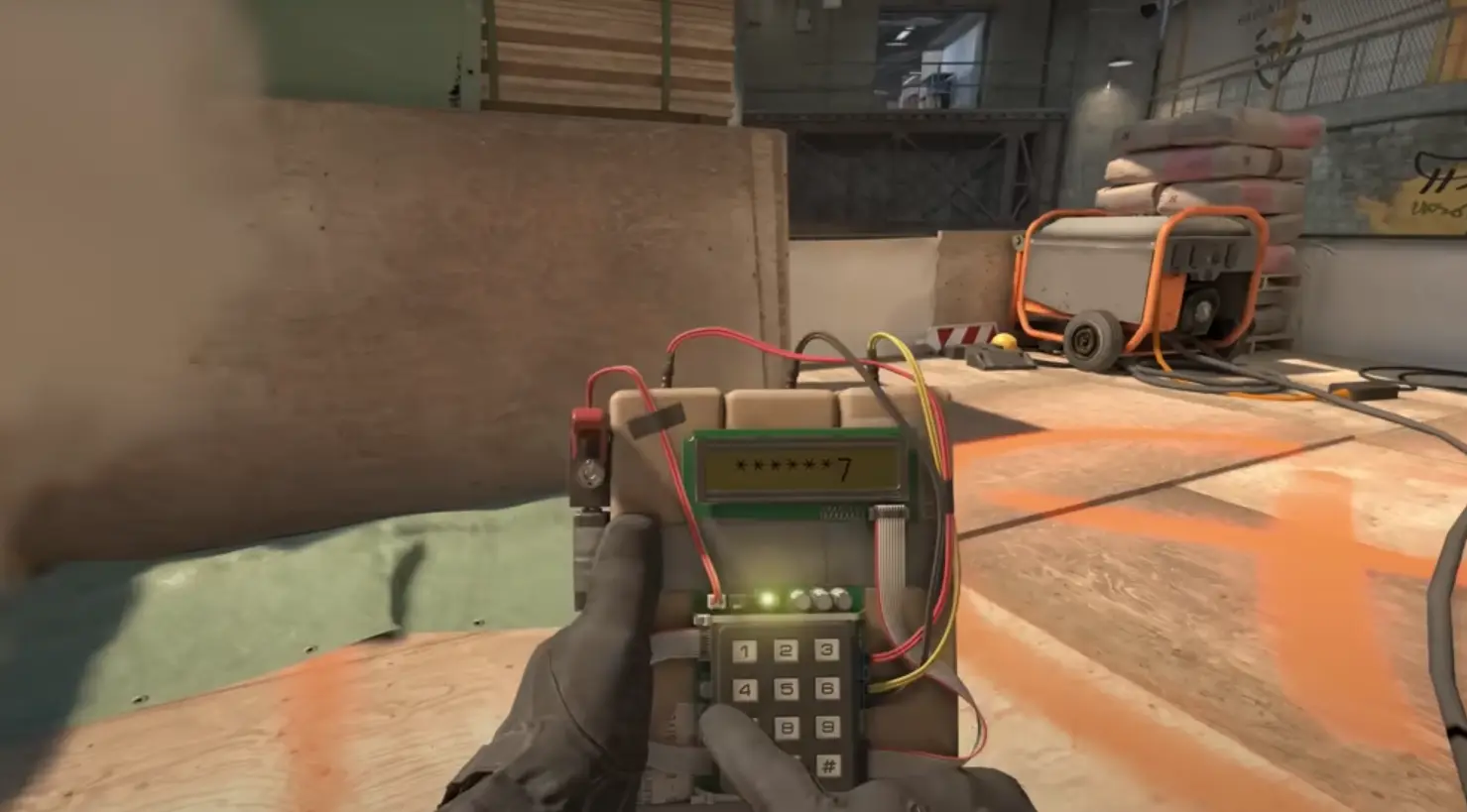
CS2 release date: Everything we know so far
Is it CS2-morrow? No, it is not.





